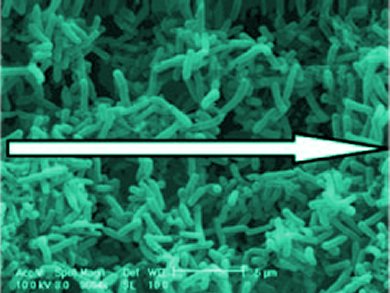Biofilms are perceived as problematic. Their robust structure is difficult to remove from surfaces and they are associated with infections, dental caries, and marine and reactor fouling. Rebecca Goss and co-workers, University of East Anglia, UK, have taken advantage of biofilm’s adhesive nature to create stable biocatalysts and examine whether artificially deposited films exhibit similar characteristics to natural biofilms.
The team determined that spin coating could be employed to control biofilm formation from modified Escherichia coli. Spin-coating was shown to improve the stability of the biofilms compared with an equivalent biomass of transformed E. coli developed without spin-coating. In the conversion of haloindoles and serine to ʟ-halotryptophans, the engineered biofilm gave up to 93 % conversion. No decrease in the rate of catalysis was seen after 30 h. Non-spin-coated biomass and immobilized tryptophan synthase gave lower conversions and catalytic activity ceased after 24 and 5 h, respectively.
The team hopes this technique will allow the introduction of any gene of choice as a “plug-and-play” platform for industrial biotransformations.

Images: © Wiley-VCH
- Engineering Biofilms for Biocatalysis
A. N. Tsoligkas, M. Winn, J. Bowen, T. W. Overton, M. J. H. Simmons, R. J. M. Goss,
ChemBioChem 2011.
DOI: 10.1002/cbic.201100200




